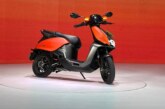
Electric vehicles becoming popular every day. To adopt EVs for large scales, there is a need for EVs charging infrastructure. Apart from charging there are a lot more such issues like EVs doesn’t go for long distances on a single charge and buying them is the huge burden as the prices are not affordable to everyone.
Electric Vehicle Charging Infrastructure Indian Market based on 3 segment
The Faster Adoption and Manufacturing of (Hybrid and) Electric Vehicles (FAME) scheme started in India since 2015 which provides subsidies to EVs. In spite of government providing subsidies, only 2.8 lakh EVs got its support since 4 years.
With this, we can say that only subsidies will not work to support the aim of the government to make a transition to EVs. However, the other reasons for the slow growth of EVs and sales are the lack of charging infrastructure which people fear and are not ready to adopt the EV.
In spite of a lot of discussions, awareness, and installation of EVs by some of the companies we still need sufficient charging infrastructure to power up the millions EVs in the coming next years, but this can happen only when there will be sufficient charging stations or swapping charging stations available t0 the people.
Electric Vehicle Charging Infrastructure
According to the International Energy Agency (IEA), there were 50 lakh electric passenger cars in operations with 52 lakh charging points worldwide as of 2018. However, if the proper and adequate charging facility is provided to the people we can expect the success of the EV industry.
80 percent of electric vehicles are charged at homes and offices it consumes a lot of time normally 8 hours.
The public charging stations will come to the rescue for the people who fear to pay their electricity bill. They think charging an EV will cost them more.
FAME II Scheme
FAME II is much focused on the installation of robust public charging infrastructure. For that, the Energy Efficiency Services Ltd (EESL) commissioned 300 AC and 170 DC chargers across India. The government installed 51 public charging points in Delhi-NCR and in progress for more installations.
At present, the Department of Heavy Industries introduced the Bharat AC-001 and DC-001 standards for EV chargers. There are also two other chargers CCS and CHAdeMO as per the ministry of power guidelines.
However national standard for chargers and connectors must be developed so that it will benefit and gives a clear idea to the manufacturers and buyers. As the present Bharat standards are limited only to a 15kW which is not sufficient for larger batteries such as buses, etc. For that separate chargers need to be developed.
4,000 EVs charging stations in India
There are around 4,000 EVs charging stations in India and Germany had over 65,000 charging stations still Steffen Knapp, Director, Volkswagen Passenger Cars says that Germany is not ready for EVs. This can be understood as India needs a lot of EVs charging stations.
250 community chargers in India
Currently, there are 250 community chargers in India and is expected to contribute to the EV growth. Charging stations at present is provided by the government and private companies, are they sufficient enough? At least an hour is needed to charge an EV and with the less number of charging stations cannot be charged. It is necessary to have a large number of charging stations to increase the growth of EVs.
Building EV charging infrastructure
For building robust charging infrastructure in India, customers, private companies and government playing a major role. Apart from that, a well-developed power grid infrastructure is the major requirement for the installation of electric vehicle charging infrastructure. Power distribution companies are key stakeholders.
Opportunity for building EV charging infrastructure
Anyone can Set up a charging station as it doesn’t require any separate license in India. The residents and commercial complexes can use up their space as it is mandated to allow 20% of their parking space for setting up EV charging stations facilities as guideline given by the Housing and Urban Development Ministry of India in January 2019, this way we can boost up the number of EVs charging stations in the country.
Power Distribution companies are key stakeholders
This will not only benefit the EV users and manufactures but also helps in improving the country’s economy as the power distribution companies can earn more than $6 billion per year by 2030 if 30% of the total vehicles in India are electric vehicles.
EV charging infrastructure market categorized in 3 segments
The electric vehicle charging infrastructure market in India can be categorized based on 3 segments such as location, component, and type of charging.
Type of charging
The type of chargers can be the direct charging and the battery swapping. Direct charging can be segmented into the fast charging and slow charging.
The fast chargers commonly used are the CHAdeMO and CCS. CHAdeMO CHAdeMO is mainly used by Japanese automobile manufacturers and CCS is widely used by most of the European, US, and South Korean automobile manufacturers.
India still has to get these chargers for that the government-mandated these two fast-charging methods which are expensive to set up in the country. The government made changes in the guidelines as these chargers are expensive and charging station developers are allowed to choose the method they prefer.
Based on component
The charging station infrastructure market in India based on the component is segmented into hardware and software & services. The hardware comprises sockets, cables, and charging units whereas the Software & services include installation and maintenance of charging units, platform as a service, and other services such as battery delivery and towing service.
Based on location
Based on location, the EV charging station infrastructure market in India is segmented into highways and cities, most of the charging stations are installed at cities and charging points need to be set up in highways for which government is working. However, it planned to set up more charging points in major highways and expressways, including Mumbai-Pune Expressway, Delhi-Agra Yamuna Expressway, and Bengaluru-Chennai Highway.
Some of the initiatives highlighted here taken to improve the EV charging infrastructure are
- Amara Raja installed EV battery charging and swapping stations also introduced a fleet of e-Autos in Tirupati.
- The Reliance Industries Ltd (RIL) and BP plc to offer the electric vehicle (EV) charging stations at their energy stations across India.
- EESL to install public charging stations at Apollo Hospitals.
- Tata Motors is planning to set up these 500 open quick-charging stations for EVs in five urban areas in the following two years in association with Tata Power.
- UP Government sanctioned 25% refund on land to set up EV charging points.
- The Greater Hyderabad Municipal Corporation (GHMC) is planning to set up 50 charging centers in the city to charge EVs.
- Magenta Power targets to install at least 500 EV charging points across India by the end of this year.
- Noida to get 100 electric vehicles (EV) charging stations.
For any promotions and advertisements on electricvehicles.in, please send an email to support@electricvehicles.inFor the latest electric vehicles news, follow electricvehicles.in on Twitter, Instagram, Facebook and subscribe to our YouTube Channel.







